The Artistry of Bride Robes: Embroidery in Bridal Fashion
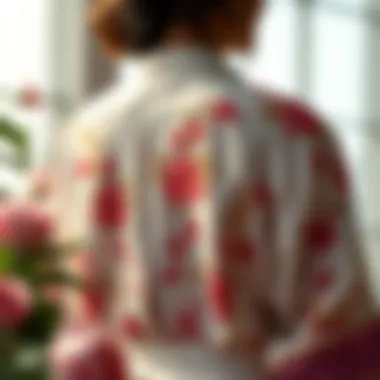
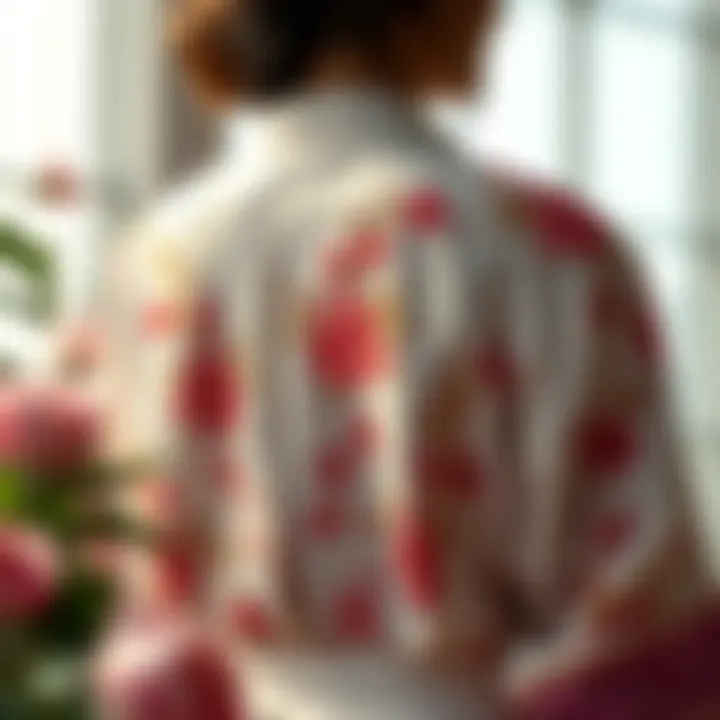
Intro
In the realm of bridal fashion, no detail is too small to contribute to the overall elegance and sophistication of the wedding experience. Among the many elements that elevate a bride's appearance, bride robes have emerged as a significant piece, seamlessly blending comfort with style. With their delicate embroidery and luxurious fabrics, these robes encapsulate the essence of bridal preparation, reflecting the love and anticipation that accompany this momentous occasion.
As we explore the artistry behind these robes, we will delve into the types of materials that lend themselves beautifully to embroidery, the historical context that makes embroidered pieces so significant, and the trends that are shaping modern bridal fashion. We will also touch on personalization options, allowing for unique touches that cater to the individual bride's taste. By understanding these elements, brides-to-be can select robes that not only serve practical purposes but also enhance their overall wedding experience.
Fabric Knowledge
The foundation of any beautifully embroidered bride robe rests firmly on the choice of fabric. The type of material can affect not just the appearance but also the feel and longevity of the robe.
Types of Fabrics
Here are some common fabrics used in bride robes:
- Silk: Sought after for its luxurious feel and elegant drape, silk provides a smooth palette for intricate embroidery. It can be a touch delicate, so care is needed.
- Chiffon: Lightweight and translucent, chiffon can add a romantic touch to robes, perfect for soft, ethereal designs. Its flowy nature pairs well with light embroidery.
- Cotton: This versatile fabric is breathable and comfortable, making it a popular choice for warmer climates. Embroidery on cotton can be bold and colorful.
- Satin: Known for its glossy finish, satin brings a touch of glamour to any robe. Embroidery on satin gives a striking contrast, enhancing its visual appeal.
How to Care for Different Fabrics
Taking care of these luxurious fabrics is essential to maintain their charm. Below are some basic care tips:
- Silk: Dry clean only, as water can warp its fibers and dull its luster.
- Chiffon: Hand wash in cold water and avoid wringing it out to prevent damage.
- Cotton: This fabric is often machine washable. Follow the care instructions on the label for the best results.
- Satin: Opt for gentle settings in the wash. Sometimes, spot cleaning might be the best way to keep satin robes pristine.
"The fabric can make or break the vibe of your bridal attire. It's worth taking time to choose wisely."
Style Tips
When it comes to styling a bride robe, several strategies come into play to elevate both comfort and fashion.
Outfit Pairing Strategies
A bride robe shouldn’t be an isolated clothing piece; it should harmonize with the entire bridal look. Consider these pairing strategies:
- Layering with Lingerie: Choose delicate lingerie sets that complement the robe, enhancing the romantic ambiance.
- Accessories: Incorporate personal touches like matching slippers or a monogrammed sash that brings together the whole look.
- Complementary Colors: Opt for robes in shades that resonate with the wedding palette, creating a cohesive aesthetic for photographs.
Seasonal Fashion Trends
The trends in bridal robes evolve with the seasons, keeping things fresh:
- Winter: Think heavier fabrics, like velvet or thicker satin, embroidered with rich colors.
- Spring: Light pastels paired with sheer materials create a blooming aesthetic.
- Summer: Breezy fabrics like cotton and chiffon in bright prints embrace the warmth.
- Fall: Darker hues with intricate, autumn-inspired embroidery reflect the season's charm.
Armed with this knowledge, brides can make informed choices that not only align with their personal style but also bring an added layer of sophistication to their special day.
Preface to Bride Robes
Bride robes, often dismissed as mere garments, carry a deeper significance in the tapestry of wedding attire. They represent not just a piece of clothing, but an experience that encapsulates the emotions, traditions, and personal style of the bride. As a bride prepares for a monumental day, the choice of robe reflects her personality, serving as a canvas to project her sense of elegance and individuality. These robes not only elevate the getting-ready experience but also create a visual narrative in wedding photographs, making them no longer an afterthought, but central to the bridal aesthetic.
The Concept of Personal Attire in Weddings
The notion of personal attire in weddings centers around the idea that what one wears can embody their identity and sentiment. A bride's gown is often the showstopper, but the robe—whether it be lacy, satin, or embroidered—provides a glimpse into her style before she steps into the spotlight. With this in mind, many opt for custom designs that showcase not only luxury but also personal touches. Popular motifs might include initials or special dates, which lend a sense of intimacy to what is usually a shared experience.
Moreover, these robes enable the bridal party to have a cohesive look during the preparations, which can be captured in candid moments and shared memories. When friends or family members are donned in elegant matching robes, the bonds of togetherness are underscored, enhancing the overall narrative of love and support surrounding the bride. This trend makes the ritual of getting ready as memorable as the wedding itself, ushering the bridal party into a world of connection that resonates throughout the day.
Historical Overview of Bride Robes
Venturing into the historical context of bride robes reveals a rich tapestry of cultural significance. Throughout the ages, brides have adorned themselves in distinctive garments that symbolize purity, commitment, and celebration. Ancient traditions in different cultures have dictated attire, signaling not just social standing but also familial ties. For instance, in ancient China, red robes were donned to ward off evil spirits, while in Western cultures, white has become synonymous with bridal purity since Queen Victoria popularized it in the 19th century.
As the evolution of fashion continued, the introduction of various fabrics and embellishments transformed the basic idea of a bridal garment into a statement piece. The embroidery techniques, now prevalent in many modern robes, trace back to skilled artisans who dedicated lifetimes honing their craft. Each stitch tells a story, whether it celebrates familial lineage, cultural practices, or personal milestones.
In today’s context, the merging of traditional styles with contemporary fabrics creates a bridge between eras, offering brides the opportunity to honor their heritage while expressing personal flair. The sophistication of bride robes thus lies not only in their aesthetic appeal but also in the cultural narratives they carry forward through generations.
"The robe a bride chooses not only reflects her unique story but also the stories of those that walked before her, weaving together past traditions with her individual future."
By understanding the importance of bride robes, one can appreciate the artistry and thought that goes into selecting these garments during one of life’s most celebrated moments.
Importance of Embroidery in Bridal Fashion
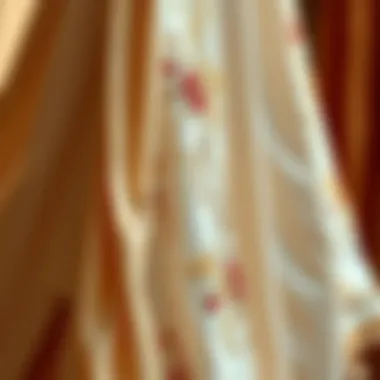

Embroidery holds a significant role in the realm of bridal fashion, elevating bride robes beyond mere garments to pieces of artistry with profound emotional resonance. This tradition not only adds dimension to fabric but also weaves stories and sentiments into the fiber of each stitch. The multifaceted allure of embroidery lies in its ability to express individuality, while reflecting cultural traditions, making it a cornerstone in bridal attire.
Symbolism and Meaning Behind Embroidery
Traditionally, embroidery in bridal garments often serves as a carrier of symbolism. Consider the intricate floral patterns commonly found on bride robes; these are not purely decorative but can represent fertility, love, and new beginnings. The choice of design, colors, and patterns can convey specific meanings, often steeped in cultural significance. For instance, in many cultures, red embroidery is believed to ward off negativity, symbolizing protection for the bride on her special day. Additionally, the act of having family heirloom designs embroidered onto a robe connects the bride to her lineage, creating a physical thread linking past generations with the present.
Furthermore, embroidery becomes a way for women to express their unique identities. Each stitch can tell a story - from crafting designs that reflect personal values or aspirations to incorporating elements that showcase regional artistry. When brides opt for personalized embroidery, it highlights their journey and individuality, setting them apart amidst a sea of traditional white satin.
> "Embroidery infuses garments with significane and personality, making each piece uniquely intimate for the bride."
Technical Skills Required for High-Quality Embroidery
The process of creating high-quality embroidery is no small feat; it requires a blend of artistry and technical skill. Understanding fabric behavior is crucial; for example, silk and cotton have vastly different responses to needlework. Skillful artisans must manipulate threads to create depth and texture, employing techniques that can range from the simple running stitch to elaborate derivatives such as satin stitch or French knots.
Moreover, the choice of threads plays a vital role in achieving the desired aesthetic. Silk threads provide a lustrous finish, while cotton threads are favored for their durability and ease of handling. Artisans must also accurately translate design concepts into stitches, maintaining clarity and coherence in their work. This blend of artistry, precision, and experience elevates a robe, transforming it from a simple piece of clothing into a cherished keepsake.
In summary, the importance of embroidery in bridal fashion moves beyond aesthetic appeal; it's steeped in symbolism, cultural identity, and technical craftsmanship. These elements converge to create garments that are not only visually stunning but also imbued with personal stories and deep meanings, reinforcing the role of bride robes within the wedding narrative.
Exploration of Fabric Choices
When it comes to choosing the perfect bridal robe, the fabric selection is nothing short of crucial. The right fabric not only plays a role in the overall aesthetic but also affects comfort and functionality. Each type of fabric brings with it its own unique qualities, benefits, and considerations that can greatly influence a bride's choice. Understanding these different materials can empower brides as they make decisions that will ultimately affect their radience on their special day.
Silks: The Luxurious Option
Silk is often regarded as the pinnacle of luxury in the world of bridal fashion. There’s something innately glamorous about the way silk catches the light and drapes beautifully over the body. It has a soft, smooth texture that feels divine against the skin, ensuring that brides not only look stunning but feel comfortable, too.
Benefits of silk include:
- Natural sheen: It adds a touch of elegance and sophistication.
- Breathability: Unlike some synthetic materials, silk is inherently breathable, making it suitable for ceremonies in various climates.
- Durability: Silk can withstand wear and tear, which is important for pieces that might be worn during moments of hustle and bustle on the wedding day.
However, potential wearers ought to keep in mind that silk is delicate and requires specific care. Its high susceptibility to stains is something to consider, especially with spillages being an unfortunate yet common occurrence on such a joyous occasion.
Cottons and Linens: Comfort Meets Elegance
For many, cotton and linen represent a harmonious blend of comfort and elegance. They are breathable and manage moisture effectively, making them ideal for warm weather weddings. Additionally, these fabrics allow for more relaxed styles, often featuring less structured designs that still look refined.
Caring for cotton and linen is easier than silk:
- Machine washable: Most cotton options are machine washable, making upkeep straightforward. Linen can also be laundried, plus it softens with each wash, giving it a unique charm.
- Versatility: Can be dressed up with accessories or worn casually, allowing for versatile styling options.
However, it's worth noting that linen can wrinkle easily, which might be a concern for some brides who want to maintain a sharp look throughout the day.
Satins: Shiny and Stylish
Satins, with their glossy finish, are a crowd favorite in bridal attire. The lustrous texture of satin exudes opulence, making it a fitting choice for brides who want that extra dash of glamour. This fabric holds its shape well and can create striking silhouettes—think of the high-neck satins or flowing sleeves that catch attention.
Some considerations when opting for satin include:
- Reflective finish: It can create stunning visual effects, especially in photographs.
- Heaviness: Some satin fabrics can feel a bit weighty, which might affect movement or comfort for long periods.
- Care: While satin is relatively durable, it can also be prone to snags, which necessitates careful handling.
Another aspect is that satin can sometimes trap heat, so choosing this fabric for a summer wedding might require careful consideration of the robe’s design.
Choosing the right fabric is a constant balancing act of personal style, comfort, and practicality, but getting it right sets the stage for the perfect bridal experience.
Types of Embroidery Techniques
Embroidery plays a pivotal role in defining the elegance and sophistication of bride robes. Not only does it enhance the aesthetic appeal, but it also allows for a personal touch that distinguishes one robe from another. The type of embroidery technique chosen can impact the overall feel and message of the robe, making it essential to understand the different methods available and their significance.
Hand Embroidery: Traditional Craftsmanship
Hand embroidery is often associated with authenticity and artisanal beauty. This age-old craft relies on skilled artisans who use needles and thread to meticulously create designs. Hand-stitched designs hold a profound charm; every loop and stitch reflects the artist's dedication, establishing a deeper connection to the piece itself.
Benefits of hand embroidery include:
- Uniqueness: No two pieces are identical, offering a one-of-a-kind item for the bride.
- Customizability: Brides can collaborate with artisans to create unique patterns, colors, and motifs that resonate with their personal styles.
- Quality and Care: Hand embroidery tends to boast finer quality when completed by seasoned craftsmen, ensuring durability and longevity.
However, brides should keep in mind that hand embroidery may come with a higher price tag and could take longer to complete. It’s critical to communicate expectations with the artisan, ensuring the result aligns with the desired outcome.
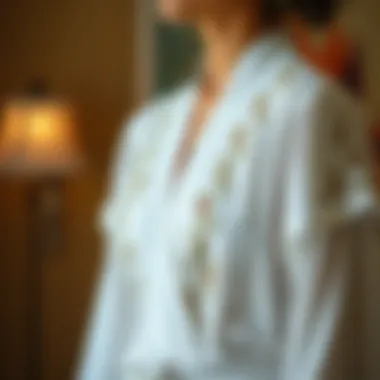

Machine Embroidery: Efficiency and Precision
In contrast, machine embroidery is driven by technology, allowing for faster production and often more consistent results. This technique uses computer-assisted machines to perform intricate designs, making it a popular choice for mass-production.
The advantages of machine embroidery include:
- Speed: Production is often quicker, fitting into tight timelines during wedding preparations.
- Precision: The designs are uniform and exact, leading to cleaner lines and less room for error.
- Affordability: Compared to hand-stitched pieces, machine embroidery tends to be more budget-friendly.
Nevertheless, it can lack the personal touch that handwork conveys. For brides seeking a unique look, it’s important to choose designs that can still provide a sense of individuality among uniformity.
Mixed Techniques: Hand and Machine Collaboration
Combining hand and machine embroidery techniques has become increasingly popular. This hybrid approach allows designers to harness the efficiency of machine work while incorporating the unique artistry of hand stitching.
Benefits of mixed techniques include:
- Enhanced Depth: The combination can create layered effects that add richness to the design.
- Personalization: Brides can have predetermined machine designs, like initials or patterns, with hand-stitched elements adding flair.
- Versatility: This method offers more design choices, appealing to a broader range of personal tastes and themes.
In summary, the method of embroidery chosen for a bride's robe is far from just a decorative detail; it's a significant aspect that influences the robe's character. By understanding the benefits and considerations of each technique, brides can make informed choices that enhance their wedding attire, ensuring they feel as unique as their special day.
"The artistry of embroidery speaks volumes about personal expression and the beauty of craftsmanship."
For more insights on embroidery, you may find these resources helpful:
Understanding the various embroidery types can help brides elevate their bridal apparel, making informed choices as they step into a journey filled with dreams.
Current Trends in Bride Robes
Exploring the current trends in bride robes reveals significant insights into how contemporary wedding attire reflects personal values and style. As traditions evolve, so too do the garments that accompany them. The modern bride seeks pieces that not only enhance her aesthetic but also speak to her individuality. This section sheds light on emerging trends that define today’s bridal fashion landscape, focusing on personalization, sustainability, and color diversity.
Custom Embroidered Robes: Personalization as a Trend
Custom embroidery has swiftly aligned itself with the desires of brides who want their attire to reflect their own unique story. It’s no longer just about throwing on a pretty robe; it's about infusing personal elements into the fabric itself. Special dates, initials, or even bespoke designs can turn a simple bridal robe into a cherished keepsake. Brides can collaborate with designers who specialize in this artistry, ensuring every stitch bears witness to a special moment.
Custom embroidery serves as a touchstone of individuality, allowing brides to express their narrative on such a significant day.
To add to this, many are now opting for robes that integrate elements from their cultural backgrounds or family histories. This melding of past and present makes for an emotional attachment that a standard off-the-rack robe simply cannot provide.
Sustainable Fabric Choices in Bridal Attire
A rising consciousness around environmental issues has led many brides to rethink their choices in wedding attire, including robes. Sustainable fabrics, such as organic cotton or linen, are gaining traction. By opting for these materials, brides not only make a style statement but also support eco-friendly practices.
- Eco-conscious options include:
- Organic cotton
- Bamboo fabrics
- Recycled polyester
Each choice reflects a commitment to sustainability while maintaining an elegance that perfectly aligns with the sophistication of embroidered pieces. Furthermore, sustainable choices can affect the overall aesthetic; for instance, the natural texture of organic cotton can enhance the look of hand-stitched designs.
Color Trends: Beyond Traditional White
Gone are the days when brides were bound to wear solely white robes. Today, color has emerged as a powerful statement in bridal fashion. Shades like blush pink, deep navy, or even rich emerald are finding their way into bridal wardrobes, transforming the typical white attire into a vibrant celebration of personal style.
- Popular colors in contemporary bride robes include:
- Blush and rose tones
- Shades of blue, from navy to sky
- Deep greens and soft earthy tones
These hues not only allow brides to showcase their personality but also permit them to coordinate with their overall wedding theme more effectively. Embracing these colors opens the door to endless possibilities in embroidery, allowing for creative expressions through the designs chosen.
The current trends in bride robes are a testament to how the quilting of personal preferences, environmental consciousness, and a break from tradition are shaping modern bridal fashion.
Styling the Bride Robe
Styling the bride robe is more than simply throwing a garment on over a wedding dress. It plays a crucial role in how the wedding day unfolds, influencing not just the aesthetic, but also the overall experience. From the moment a bride slips into her robe, it sets the tone for her special day, a blend of comfort and elegance. Given the hustle and bustle often associated with weddings, a well-styled robe provides not just a layer of beauty, but also practical benefits.
Layering Techniques for Bridal Attire
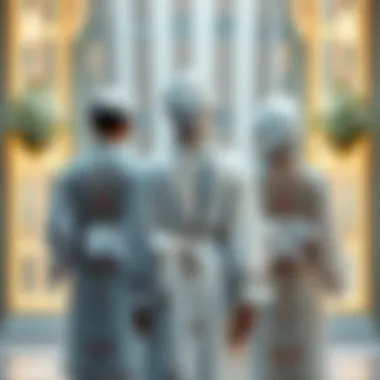
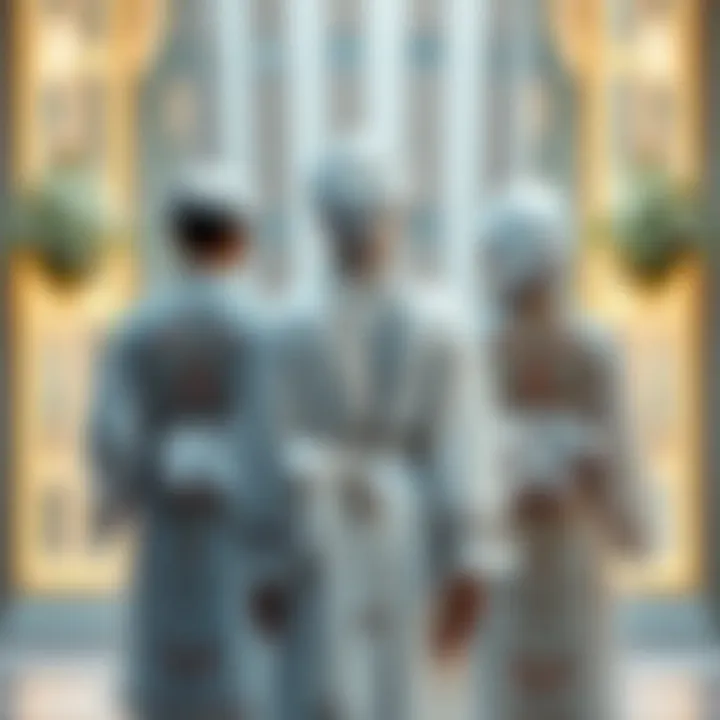
When it comes to layering techniques, a thoughtful approach can elevate a bride robe to new heights. Here are some practical techniques:
- Balance: Striking the right balance is essential. A robe should neither hide the intricate details of the dress beneath nor be overpowering in its presence. The choice of lace, satin, or even silk can dramatically affect how light and volume interact among layers.
- Contrasting Textures: Mixing textures is an exciting way to add depth to bridal attire. Pairing a smooth satin robe over a delicate lace dress or a soft cotton gown can create a visually captivating combination that draws the eye.
- Color Coordination: While many brides opt for traditional shades, employing contrasting colors in a layered approach might lend an unexpected flair. A soft blush robe over an ivory gown, for instance, creates a layering illusion that captivates.
- Length Variations: Considering the length of the robe in relation to the dress is also worth noting. A knee-length robe over a full-length gown maintains an aura of elegance while providing a hint of playfulness.
Layering is about recognizing how various fabrics, lengths, and textures harmonize to create a luxurious bridal look. This aspect can often be overlooked but brings sophistication to the wedding attire, ensuring that every detail is on display and appreciated.
Accessorizing with Bridal Robes
Accessorizing the bride robe requires a discerning eye. While the robe itself can be a statement piece, the right accessories can amplify that effect and deepen the overall bridal theme. Here are some noteworthy considerations:
- Jewelry Choices: Simple but striking jewelry can be the way to go. Think pearl studs or a delicate bracelet that doesn’t compete with the intricate embroidery of the robe. Remember, less is more when it comes to such a layered look.
- Footwear: The choice of footwear shouldn’t be an afterthought either. Elegant slippers or delicate heels can accentuate the grace of the robe without overshadowing it. The footwear should embody comfort; opting for something that looks good but feels good is integral to ensure the bride feels confident throughout the day.
- Hair and Makeup: Accessorizing also extends to hairstyling and makeup. A soft updo complemented by floral pins or hairpieces can frame the face beautifully. Additionally, a gentle makeup palette can enhance rather than overpower.
- Belt and Sashes: Incorporating a copious belt or sash can also add a focal point. This choice can help define the waist, provide structure, and create a cohesive look while harmonizing with the embroidery.
Ultimately, accessorizing is about enhancing, not overpowering. Each choice should lend itself to a chic, complete look that highlights the sophistication found in embroidery while emphasizing the bride's unique personality.
"The beauty of styling lies in the details; it's often those subtle touches that leave a lasting impression."
Care and Maintenance of Embroidered Robes
Taking proper care of embroidered bride robes is critical not only for preserving their beauty but also to ensure they stand the test of time. Just as much thought goes into selecting these pieces for important moments, equal attention should be given to maintaining them. By adopting the right care and maintenance practices, brides can enjoy their robes long after the wedding day.
Washing and Drying Guidelines
When it comes to washing, delicate items like embroidered robes require a gentle touch. Here are some essential guidelines to follow:
- Use Cold Water: Always wash your bride robe in cold water. Hot water can weaken the fibers and distort the delicate embroidery. Cold water helps keep the fabric secure while ensuring that any colors remain vibrant.
- Gentle Cycle: Opt for the delicate cycle on your washing machine. This cycle is designed to protect intricate embellishments, making it less likely for them to come loose or be damaged.
- Mild Detergents: Utilize a gentle detergent that’s free from harsh chemicals. Look for detergents labeled for delicate fabrics; these are less likely to cause fading or damage.
After washing, it's critical to dry your robe properly to prevent any fabric or embroidery damage:
- Air Drying: Avoid using a dryer, as the tumbling can be rough on the fabric. Instead, lay the robe flat on a clean, dry towel to absorb excess water and reshape it. Alternatively, hang it up in a shaded area away from direct sunlight to prevent fading.
- Avoiding Wrinkles: If wrinkles form, consider steaming the robe rather than ironing it. The heat from a garment steamer is gentler and helps maintain the integrity of the embroidery.
"With proper washing and drying methods, your embroidered bride robe can remain a cherished memory rather than just a fleeting moment."
Storage Solutions for Longevity
How you store an embroidered robe can significantly affect its longevity. Here are several tips to keep your robe in excellent condition:
- Breathable Garment Bags: Using cloth garment bags instead of plastic prevents moisture buildup and helps the robe breathe. Plastic can trap humidity, leading to mold and mildew.
- Avoid Hanging: While hanging might seem convenient, it can stretch the fabric over time. Instead, consider folding the robe gently in a manner that avoids pressing down on the embroidered sections.
- Cool, Dry Storage: Choose a cool, dry place for storing the robe. Heat and humidity can warp the fibers or alter the colors in your embroidery.
- Occasional Inspection: Every now and then, take the robe out to check for any signs of damage or pests. Early detection can save you from having to address extensive damage later on.
By following these washing and storage guidelines, bridal robes can retain their embroidered elegance and beauty, becoming a cherished part of wedding memories for years to come.
Closure: The Lasting Impact of Bride Robes
As we wrap up our exploration into bride robes, it’s essential to recognize their emotional and cultural weight in the fabric of wedding traditions. Bride robes aren't merely pieces of clothing; they serve as a canvas for tradition, creativity, and personal expression. Many brides will tell you that donning a beautifully embroidered robe is as much about the experience as it is about the aesthetics.
A well-crafted robe can immortalize moments leading up to the wedding. From the quiet solitude of preparation to the joyful chaos of getting ready with loved ones, these robes envelop brides in a sense of comfort and elegance. Their embroidered artistry often tells a story, echoing the unique history of the bride and her family. This personal significance transforms what may seem like just attire into cherished mementos, forever linked to the memories of one of life’s most pivotal moments.
Another layer to consider is the continuing legacy of embroidery itself. The intricate stitches, motifs, and designs all pay homage to ancient traditions that have been passed down through generations. In many cultures, embroidered garments symbolize not only beauty but also blessings and protection. Therefore, these robes can carry the weight of history, a bridge connecting the past to the present.
It's also interesting to note that the rising trend of personalization through custom embroidery brings even more meaning to these garments. Brides are not just choosing elegant patterns; they’re also selecting colors, symbols, and words that resonate with their journeys. This individual touch transforms something already sophisticated into a deeply personal artifact.
In summary, bride robes, especially when adorned with embroidery, are significant on multiple levels. By blending the personal and the traditional, they create a lasting impact that goes beyond the day itself, carving a niche in the history of wedding experiences.
Personal Significance in Wedding Memories
The personal significance of bride robes in wedding memories resonates deeply with many brides. As the saying goes, "the little things make the big day." From the pre-ceremony rituals to the final moments before walking down the aisle, the robe often becomes a backdrop for heartfelt interactions.
Additionally, these robes provide a sense of intimacy and comfort during what can be a stressful time. From sipping mimosas while laughing with the bridal party to stealing quiet moments of reflection, the robe wraps the bride in a protective layer, both literally and metaphorically. Gone are the days when the bride is lost in a sea of formalwear; today, she can embody a fresh, sophisticated vibe while still honoring traditions that hold great value.
Notably, many brides have shared stories of how wearing their embroidered robes has created lifelong memories. For instance, capturing those candid moments in photographs, often revealing a beautiful juxtaposition of elegance and authenticity, is something brides cherish long after their wedding day.
Embroidered Details as Centuries-Old Traditions
Embroidered details in bride robes often hark back to centuries-old traditions that emphasize craftsmanship and artistry. Cultures around the world have utilized embroidery to convey storytelling, heritage, and personal values.
These artisanal techniques showcase not only the skill of the craftsmen but also the emotional and cultural significance tied to the designs.
For example, in many cultures, specific motifs are believed to symbolize protection or good fortune, making them an integral part of wedding attire. Incorporating these elements into a bride's robe allows her to carry these blessings into her new life as a married woman.
"Embroidery isn’t just a decorative art; it’s a form of lineage, a conversation that continues across generations."
In today's context, many brides choose to embed these traditional designs into modern collections, creating a unique blend of old and new. This union of styles enriches the narrative of bridal fashion while celebrating the timeless nature of embroidered elegance. This way, every stitch in a robe has the potential to tell stories that transcend time, beautifully intertwining tradition with modern sophistication.
In sum, the impact of embroidered bride robes extends well beyond their physical appearance; they are a multifaceted representation of love, legacy, and individuality, ultimately leaving a lasting imprint on the heart and memory.















